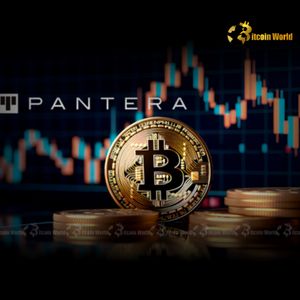MSTY: This High-Risk, High-Yield ETF Is All Smoke And Mirrors
9 min read
Summary Yieldmax MSTR Option Income Strategy ETF’s headline ~100%+ yield is mostly return of capital, not sustainable income, making the high payout misleading for long-term investors. The MSTY fund’s synthetic covered call strategy on MicroStrategy Incorporated stock exposes it to significant downside risk, especially given MSTR’s Bitcoin-driven volatility. While MSTY has outperformed peers in total return since inception, this is unlikely to be repeatable due to NAV erosion and unsustainable distributions. I do not recommend MSTY for long-term investors seeking sustainable growth; if you must invest, keep exposure minimal due to high risk. The Yieldmax MSTR Option Income Strategy ETF (NYSEARCA: MSTY ) is one of a handful of ETFS that currently offer circa-100% yields. With typical yields between 1% and 5%, triple-digit distributions will surely turn heads. But is it MSTY worth it? Well, before I get into it, I think it’s important to give you a little of my background as it might assist in explaining my thesis. I consider myself a boring, long-term investor. My average holding is over eleven years, and I rarely sell. I buy and hold growth stocks over the long term, as well as quality dividend stocks for income generation, should I ever decide to retire. Most of my positions make up ~1.5 – 2% of my total portfolio, with a few Mag 7 positions taking up 8-9%. I do not invest in crypto – it’s not for me. However, I do like options income strategies like covered calls and cash-secured puts – which is why this article was fun to write. Attractive yields present a salivating opportunity for outsized distributions, if you understand the risks and are willing to take the plunge. MSTY offers an incredible distribution on the surface, but I say it’s mostly smoke and mirrors. Spoiler: I would not recommend MSTY. Let me explain. ETF Profile The YieldMax MSTR Option Income Strategy is one of many ETFs that YieldMax ( YMAX ) currently offers. The company itself went public in late 2022, with its first ETF being the TSLA Option Income Strategy ETF ( TSLY ). Its ETFs focus primarily on income-generating options strategies to generate distributions for its investors. MSTY itself was launched in early 2024 and focuses on selling covered calls on MicroStrategy Incorporated ( MSTR ), now simply Strategy . What’s interesting about this entire setup is Strategy’s business model – it functions less like a traditional tech firm and more like a proxy Bitcoin ( BTC-USD ) holding company, with the vast majority of its balance sheet tied up in cryptocurrency. Strategy Inc Source: Strategy Inc. As of June 25, 2025, Strategy held 592,345 BTC , with an average cost of $70,681 per share, or approximately $41.857 billion in total. Uncovering YieldMax’s MSTY ETF Going back to YieldMax’s MSTY, the fund invests in a combination of long and short calls and short puts to create a synthetic covered call position. To understand the fund’s makeup, we need to first understand what a synthetic long position is, and what synthetic covered calls are. A synthetic long position requires three components: Cash/cash-like asset for collateral Short Put Long Call. The options usually have the same expiration date and strike. The short put allows the investor to participate in the downside, while the long call offers unlimited upside. When combined, the position costs less than directly owning the underlying asset, and carries the same risk as owning the underlying outright. Next, we have the synthetic covered call. With a traditional covered call, the investor sells a call on a stock they already own. The synthetic version allows the investor to sell up to an equal amount of calls against the portfolio’s long calls. Should the short call be assigned, the investor or fund manager can assign the long call position to cover the short call assignment. Since MSTY is selling calls, any volatility in MSTR – and Bitcoin by extension – can be a good thing. Higher volatility means higher premiums, though it comes with higher risk. MSTY Holdings Summary Here’s a complete breakdown of MSTY’s holdings: Options Positions Position Type Strike Price Market Value ( USD ) Portfolio Weight (%) MSTR Long Call $370.01 (Exp. 07/11) $14,927,428.60 0.31% MSTR Short Put $370.01 (Exp. 07/11) -$8,400,115.03 -0.18% MSTR Short Put $370.01 (Exp. 07/18) -$109,305,245.32 -2.30% MSTR Short Put $380.01 (Exp. 07/18) -$61,518,470.66 -1.29% MSTR Short Call $382.50 (Exp. 06/27) -$4,175,000.00 -0.09% MSTR Short Call $385 (Exp 6/27) -$5,862,500.00 -0.12% MSTR Short Call $387.5 (Exp 6/27) -$13,092,750.00 -0.28% MSTR Short Call $390 (Exp 6/27) -$3,416,400.00 -0.07% MSTR Short Call $392.50 (Exp 6/27) -$820,000.00 -0.02% MSTR Long Call $400 (Exp 6/27) $780,000.00 0.02% MSTR Short Call $420 (Exp 6/27) -$195,000.00 0.00% MSTR Short Call $380 (Exp 7/3) -$3,590,000.00 -0.08% MSTR Short Call $390 (Exp 7/25) -$2,675,000.00 -0.06% MSTR Short Call $392.50 (Exp 7/25) -$1,168,750.00 -0.02% MSTR Short Call $395 (Exp 7/25) -$1,018,750.00 -0.02% MSTR Short Call $397.50 (Exp 7/25) -$887,500.00 -0.02% MSTR Long Call $410 (Exp 7/3) $730,000.00 0.02% MSTR Long Call $370 (Exp 7/18) $177,903,812.50 3.74% MSTR Long Call $380 (Exp 7/18) $55,104,000.00 1.16% Cash & Securities Positions Security Name Market Value (( USD )) Portfolio Weight (%) United States Treasury Bill 02/19/2026 $112,447,601.12 2.37% United States Treasury Bill 08/14/2025 $591,975,469.68 12.45% United States Treasury Bill 11/06/2025 $385,386,926.47 8.11% United States Treasury Note/Bond 3% 07/15/2025 $382,337,797.02 8.04% United States Treasury Note/Bond 4.25% 10/15/2025 $638,453,855.82 13.43% United States Treasury Note/Bond 3.875% 01/15/2026 $1,123,742,006.11 23.64% First American Government Obligations Fund 12/01/2031 $61,088,195.28 1.29% Cash & Other $1,424,002,851.14 29.96% Source: YieldMax . MSTY earns premiums by selling options, which serve as its primary source of cash flow. All of its short call positions are short-dated, with the synthetic positions expiring further out. Furthermore, cash and treasury bonds make up a significant portion of MSTY’s holdings. This risk-free collateral supports the option strategy’s collateral requirements and facilitates redemptions. The inherent stability of treasury notes can also serve as a stabilizer against the volatility of MSTR. Strategy Risks Now, for reference, covered calls earn income through selling options, but at the cost of limited upside. That means any strong upward rally for MSTR will not translate to additional distributions for shareholders. Since the ETF’s gains are limited to the strike price of the short calls, extreme rallies can lead to missed upside and costs associated with repositioning the options, especially in synthetic strategies like MSTY’s. If MSTR falls significantly below the strike prices of those puts, the fund could face early assignment or, more realistically, mark-to-market losses due to the increased value of the short puts. These synthetic exposures can behave similarly to being “assigned,” impacting the fund’s net asset value and potentially reducing its ability to generate or maintain distributions during that period. However, I would imagine that management would roll out said positions before that happens, though that would entail additional costs and, again, decrease distributions. Peer Comparison Now, onto the juicy parts. Instead of comparing MSTY to other YieldMax ETFs, I’ll compare it to other ETFs that utilize similar option strategies on MSTR or Bitcoin itself. As an introduction, here are the members of this peer group, along with their respective expense ratios (portfolio fees) and yields. ETF Ticker ETF Name Expense Ratio TTM Yield Inception Date MSTY YieldMax MSTR Option Income Strategy ETF 0.99% 139.46% 2/21/24 YBTC Roundhill Bitcoin Covered Call Strategy ETF 0.96% 45.0% 1/18/24 IMST Bitwise MSTR Option Income Strategy ETF 0.98% 13.93% 4/1/25 BTCC Grayscale Bitcoin Covered Call ETF 0.66% 7.01% 4/2/25 BAGY Amplify Bitcoin Max Income Covered Call ETF 0.65% 2.69% 4/29/25 BCCC Global X Bitcoin Covered Call ETF 0.75% 0.79% 6/3/25 JEPI JPMorgan Equity Premium Income ETF 0.35% 8.32% 5/20/20 Source: Rick Orford. I added the inception date to provide a more comprehensive view of the peer group, as most are new and have not yet completed a full-year distribution cycle. I also added the JPMorgan Equity Premium Income ETF as a more realistic baseline reference for option-driven ETFs. From the chart above, MSTY pays the highest yield out of all the ETFs on a trailing twelve-month basis, even compared to Roundhill Bitcoin Covered Call Strategy ETF, which was launched before MSTY. This makes MSTY a bit of an outlier in terms of income generation, though it comes with outsized risks due to its particular income-generating strategy. But to be fair, we should examine the ETF’s price movement for a comprehensive review. YieldMax MSTR Option Income Strategy ETF Price Action & Total Returns MSTY is down 2.55% since its initial public offering in February 2024. Over the same period, its closest peer, YBTC, has lost 7.2%. The remainder of the ETF’s are still very embryonic and choppy. Seeking Alpha NAV and Market Price Now that we’ve looked at MSTY’s price chart and total return, it’s important to determine how well the fund’s net asset value ((NAV)) has tracked its market price. As per the company’s data, MSTY’s NAV sits at $20.54 as of May 31, 2025. At the time, the closing price was $20.57, meaning the fund was trading at a slight premium. YieldMax Source: YieldMax . Now, small fluctuations between NAV-to-price comparisons are to be expected, especially with a high-yield ETF. However, it’s still reasonably close, which is a positive sign that its arbitrage mechanisms work. Distributions and Total Net Return YieldMax Now, with all that out of the way, let’s highlight arguably the most important aspect of this article: MSTY’s distribution. Since inception, MSTY holders would have received between $1.3356 and $4.213 per unit. However, that only paints a partial picture of your potential benefit as an investor. We need to look at total returns to get a better picture. Below is a chart outlining total returns, assuming an investor bought MSTY at its all-time high date (March 28, 2024), and held it to today. And I’ll compare it with YBTC and JEPI – the only ones in the peer group that were active during that time. ETF Price on Mar 28, 2024 Current Price Capital Gain/Loss Distributions Received Net Total Return ($) Net Total Return (%) MSTY $42.99 $21.05 –$21.94 $38.37 $16.93 +39.38% YBTC $55.16 $45.58 –$9.58 $24.94 $15.36 +27.85% JEPI $57.86 $56.57 –$1.29 $5.70 $4.41 +7.62% Source: Rick Orford. So, even after a dramatic 49% price drop with MSTY, an investor who bought at MSTY at its peak would still be up by almost $17 per share, or around 39% of their initial investment. My Concerns Around Return of Capital MSTY’s latest distribution of $1.4707 was 97.45% return of capital ((ROC)) and just 2.55% income. In other words, $97.45 of every $100 in distributions paid was the investor’s own money. It’s more or less in line with a majority of its peer group, except for Bitwise MSTR Option Income and possibly JEPI (due to its more diversified nature). ETF Ticker Latest Distribution % Return of Capital (ROC) % Income MSTY (YieldMax MSTR Option Income) $1.4707 97.45% 2.55% YBTC (Roundhill Bitcoin Covered Call) $0.20 100% 0% IMST (Bitwise MSTR Option Income) $7.01 0% 100% BTCC (Grayscale Bitcoin Covered Call) $0.9449 100% 0% BAGY (Amplify Bitcoin Max Income Covered Call) $1.4613 96% 4% BCCC (Global X Bitcoin Covered Call)* $0.14 (CAD) No Data (Released at year-end) No Data (Released at year-end) JEPI (JPMorgan Equity Premium Income) $0.5400 No Data No Data Source: Rick Orford. Now, ROC isn’t inherently bad. In fact, it can be tax-efficient in the short term as ROC distributions are simply your own money given back to you, reducing your cost basis, and deferring tax liability until you sell the ETF. However, when most of MSTY’s distributions are comprised of ROC instead of actual income for most of the time, it raises significant concerns about the sustainability of these distributions. While this can be highly effective in the short term, especially during periods of high volatility, it means the ETF often returns premium income (or capital) to shareholders rather than growing the underlying NAV. Any negative market movement, such as MSTR underperforming or its positions incurring mark-to-market losses, can accelerate NAV erosion, which in turn may reduce the fund’s ability to maintain future payouts. In that sense, MSTY’s distributions are less of a yield from earnings and more of a structured return of capital. Verdict So, yes, MSTY’s high yield and relatively stable NAV might make compelling selling points, but its prospects are not as rosy as they appear on the surface. We can’t ignore the fact that any investor who bought at its peak is still up by $16, thanks to its triple-digit yields and despite the deep price downturn. But is this repeatable? And how long would it take for the losses to outpace the returns and eat away at your capital? Remember, in 2021 Bitcoin hit $60,000, then experienced a significant decline and was trading at just above $16,000 by the end of 2022. During the same period, MSTR experienced a price decline of around 70% to 80%. And even though some people might like to think that “it’s only up from here,” Bitcoin is notoriously volatile and often goes through multi-year boom-and-bust cycles. If that happens, MSTY’s synthetic long exposure would place it directly in the line of fire. Deep-in-the-money short puts and collapsing long call values would result in mark-to-market losses and steep NAV erosion. That would likely force the fund to either cut distributions sharply or continue paying out return of capital while its NAV collapses and its ability to recover evaporates. And that’s my core issue with MSTY – it’s not built for long-term, multi-year sustainable growth, and it certainly doesn’t align with my investment preferences. It’s structured more for income extraction, not capital appreciation, and that income is highly dependent on favorable volatility conditions, which never last forever. That’s why I can’t recommend this fund. However, if you do buy the ETF, I’d suggest keeping your exposure low. That way, when the tide inevitably turns, you don’t lose a big chunk of your portfolio.

Source: Seeking Alpha



